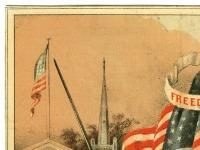This lesson fits into curriculum about the antebellum and Civil War period, especially with regard to the role of African Americans in the abolition of slavery. The story begins with the United States Congress in 1850 reaching a compromise concerning the new territories gained from the war with Mexico. The Compromise of 1850 added a new Fugitive Slave Act that required both federal and state authorities to search and to return any runaway slaves who successfully reached the North and gained their freedom. The law sparked a great controversy in the North and was met with resistance throughout the Northern cities of Philadelphia, New York, and Boston.
William Still, a prominent Philadelphia businessman kept a journal of all the runaway slaves he met through the Underground Railroad. The journal gives a physical description of each person, their slave and freed name, where in the South they came from, and an account of how they were treated as slaves. Still kept his journals at great risk to himself and to those individuals he interviewed over the years. In 1863, Still, fugitive slaves, and slaves within the Confederate States of America (CSA) were in less danger due to President Lincoln's Emancipation Proclamation. President Lincoln exercised his executive power in liberating those enslaved in the CSA.
The Emancipation Proclamation allowed Northern and recently freed Southern blacks to join the military and take up the Union cause. The number of black soldiers greatly increased after 1863. Black soldiers were segregated in separate units; they received less in pay, and were initially held back from the fighting. Lt. Nathaniel H. Edgerton, a white officer, expressed his appreciation of the bravery of the African American soldiers and their right to equal pay with white soldiers in an 1864 letter. Through an examination of these three documents students will read and understand the sacrifice and progress made by and for blacks and all Americans in the mid-nineteenth century.


